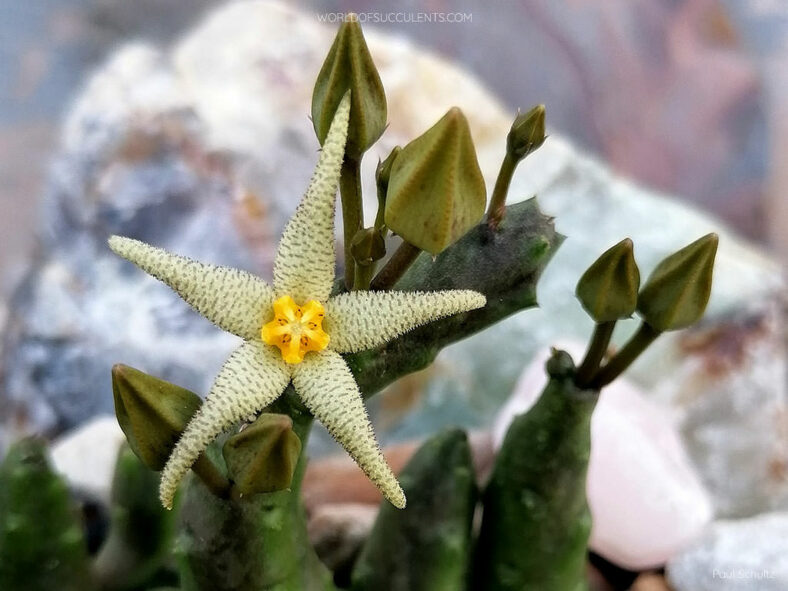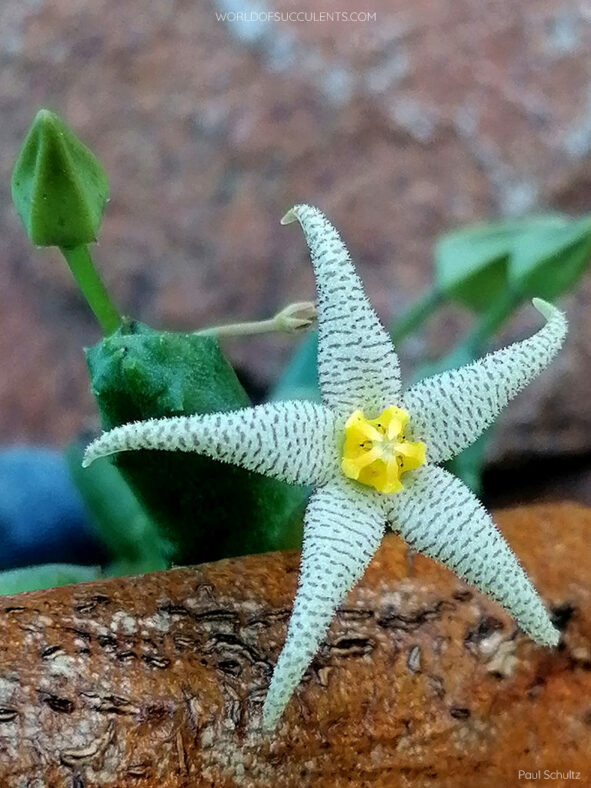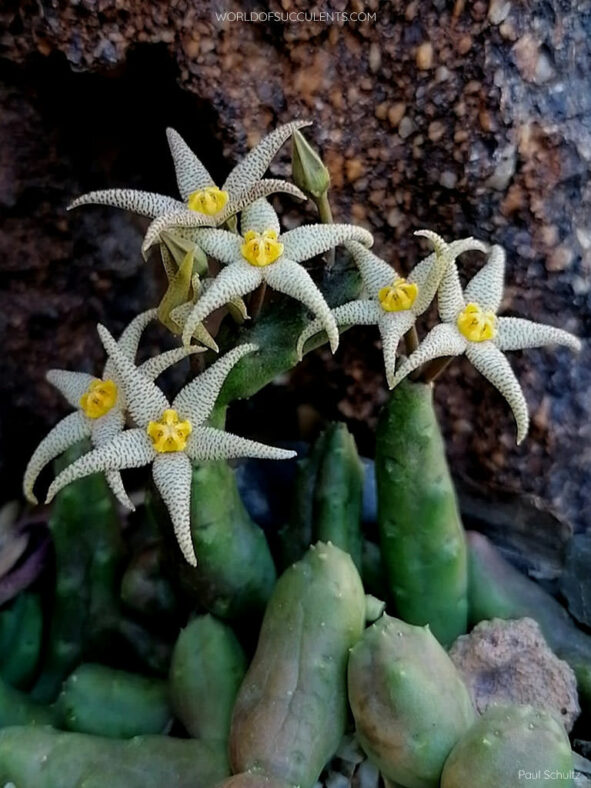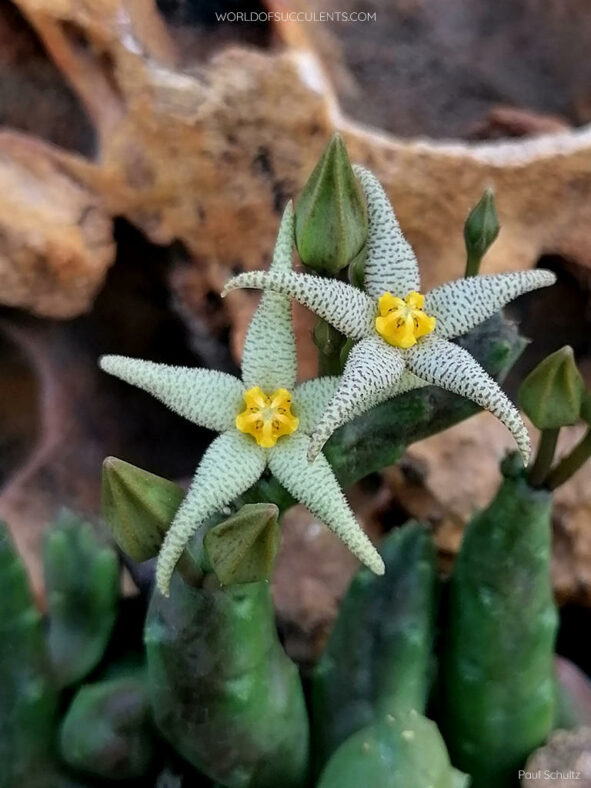Scientific Name
Piaranthus cornutus N.E.Br.
Synonym(s)
Ceropegia cornuta, Piaranthus cornutus var. cornutus, Piaranthus decorus subsp. cornutus
Scientific Classification
Family: Apocynaceae
Subfamily: Asclepiadoideae
Tribe: Ceropegieae
Subtribe: Stapeliinae
Genus: Piaranthus
Etymology
The specific epithet "cornutus (kor-NOO-tus) means "horned, having horns" and refers to the corolla lobes.
Origin
The native range of Piaranthus cornutus extends from southern Namibia to the Northern Cape, Western Cape, Eastern Cape, and Free State in South Africa.
Description
Piaranthus cornutus is a small succulent with obtusely 4-angled, greyish-green or glaucous-green stems with 3 to 5 tubercle-like teeth along the angles. The stems are erect to ascending, spherical or oblong, and can grow up to 2 inches (5 cm) long, in cultivation often longer, and up to 0.7 inches (1.8 cm) in diameter.
The erect flowers appear in late summer and fall in pairs on pedicels, up to 0.7 inches (1.8 cm) long, above the middle or at the tips of the stems. The corolla is deeply lobed, without a distinct tube, and can reach up to 1.1 inches (2.8 cm) in diameter. The lobes are lance-shaped, smooth on the back, velvety on the inner face, yellowish or whitish, and dotted with purple or crimson. The yellow columnar corona forms the flower center. The fruits are follicles that can grow up to 4 inches (10 cm) long and contain quite large seeds.

How to Grow and Care for Piaranthus cornutus
Light: P. cornutus grows best in full sun or partial shade but will benefit from light shade during the hottest summer days. Indoors, place the plant near the brightest window in your home. Avoid abruptly moving plants adapted to lower light levels to full sun to prevent sunburn.
Soil: You can use a commercial potting soil mix for succulents or prepare your own with 50 to 70 % mineral grit, such as coarse sand, pumice, or perlite.
Temperature: This plant thrives in warm outdoor environments with low to moderate humidity. It does not like winter cold and should remain fairly dry and warm during its winter dormancy. P. cornutus can withstand temperatures as low as 35 °F (1.7 °C). USDA Plant Hardiness Zones 10b to 11b, 35 to 50 °F (1.7 to 10 °C).
Watering: P. cornutus has typical watering needs for a succulent. Water your plant thoroughly during the growing season, from spring to fall, and allow the soil to dry between waterings. Do not water in winter. The plant goes dormant in winter and needs almost no water, about once a month.
Fertilizing: Fertilizing is a good idea to keep your plant healthy and thriving. Feed with water-soluble fertilizer diluted to half the recommended strength only when the plant is actively growing.
Repotting: Repot your plant in spring, just before the growing season begins. P. cornutus has shallow roots and does not require much soil to grow. Choose a container with drainage holes.
Propagation: The best way to propagate this succulent is by stem cuttings. Take cuttings during the growing season to ensure good rooting. P. cornutus is also easy to grow from seeds. Sow the seeds in spring.
Learn more at How to Grow and Care for Stapeliads.
Toxicity of Piaranthus cornutus
P. cornutus has no toxic effects reported. It is safe around pets and humans.
Links
- Back to genus Piaranthus
- Succupedia: Browse succulents by Scientific Name, Common Name, Genus, Family, USDA Hardiness Zone, Origin, or cacti by Genus
Photo Gallery


